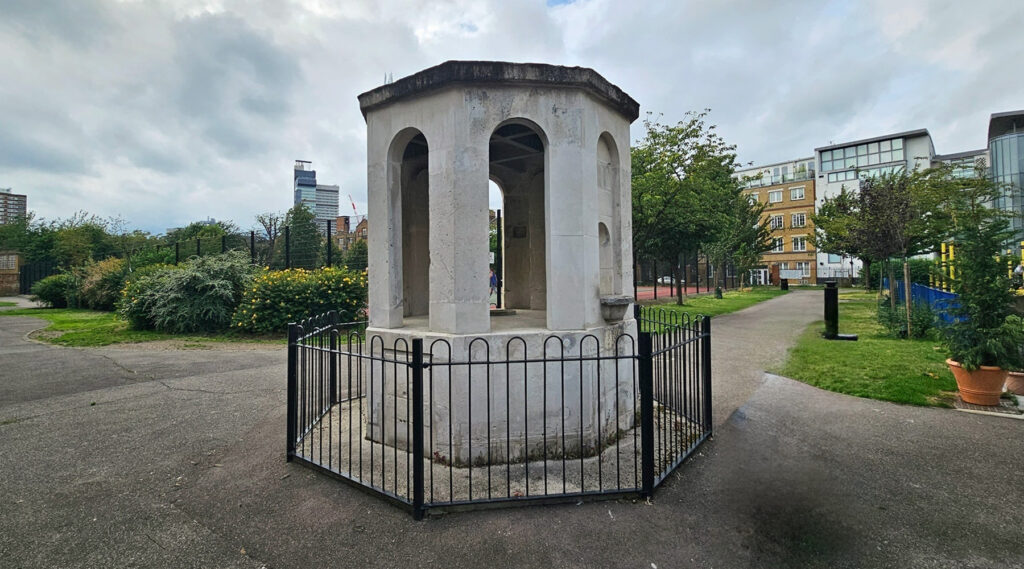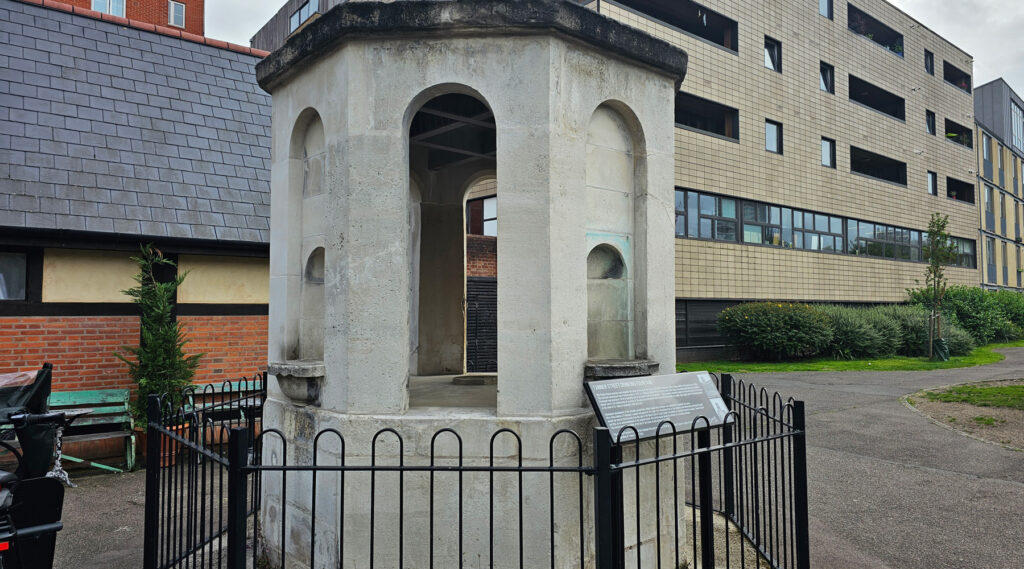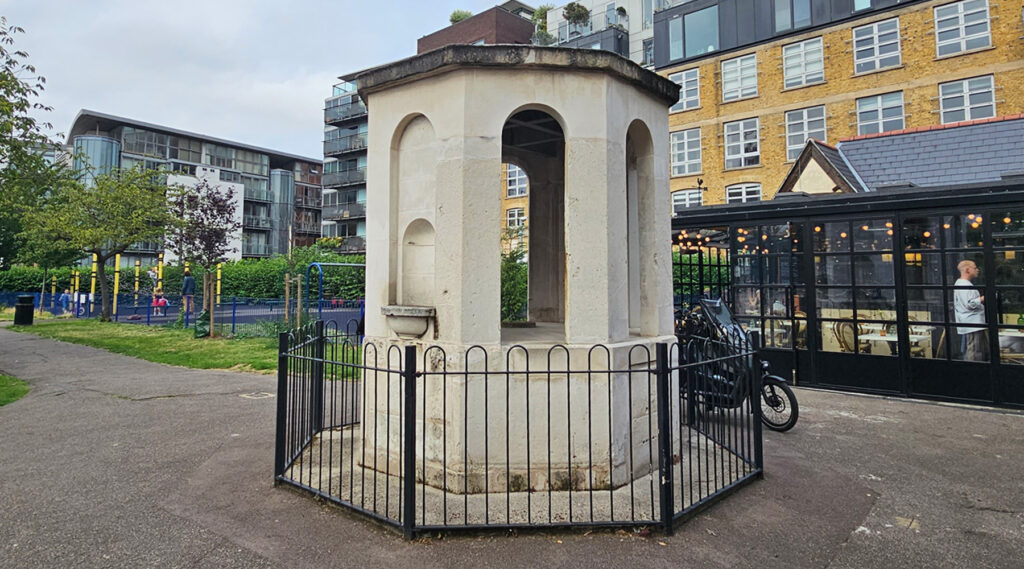There’s a drinking fountain in Bermondsey that would once have been very difficult to get a drink from, as it used to be on top of a church.
Not that it was a drinking fountain at the time, though.
What is now a drinking fountain was originally the turret on top of the tower of St Olave‘s Church on Tooley Street. The church, which sat next to the Thames London Bridge is thought to date all the way back to the Domesday Book of 1086 and was dedicated to Olav Haraldsson, an early King of Norway, who attempted to convert his people to Christianity and was martyred in 1030.
The location is significant as he was a prince and an ‘ally’ (i.e. mercenary) of King Æthelred the Unready, fighting the Danes. While they were occupying the wooden London Bridge, Olav is said to have tied his longboats to the bridge supports and pulled it down. Olav later became a popular saint in England, and this church next to London Bridge is just one of five more that were dedicated to him in London.
The Norman-era church was demolished and replaced in 1737 with a modern church to a design by Henry Flitcroft, and at the top of the church tower, he designed a stone turret.
However, increased industrial use of the London Bridge area in the 19th century and the arrival of the railways allowing people to move further away from work saw the church parish population shrink. This wasn’t helped by a bad fire in 1843 that caused a lot of damage to the church building.
Eventually, the Ecclesiastical Commissioners gave permission to demolish the church in 1918, but only if the tower was preserved and the church grounds retained as a public park in perpetuity.
There was a legend that King Harold I was buried in Westminster Abbey, but his body was subsequently exhumed, beheaded, and thrown into the Thames, but recovered downstream at London Bridge, and reburied in St Olav’s church. So strong was the legend, that when the church was being demolished, they looked for the King’s burial site.
However, the new public park’s perpetual existence was to be a lot shorter than expected, and after a bit of a fight, the remainder of the church was demolished in 1926-28 and the land sold off. The art-deco St. Olaf House stands on the site today.
The parish charity that supported local people still exists though, and still makes grants of around £600,000 each year to young people in Southwark.
But, back to the drinking fountain…
The capping turret was relocated to Tanner Street Park in Bermondsey, where it was converted into a drinking fountain at a cost of £5,838 which included the cost of laying out the new park for the fountain.
The fountain looks as it if is in a corner, which indeed it is, but when the park was originally laid out it was smaller, so the fountain, at the end of a tree-lined path, was the focal point. Today, the park is about three times larger than it was which makes the fountain look rather insignificant now.
But a bigger park is always a good thing.
The drinking fountain fell into some disrepair until it was restored in 2018, and a new fence erected around it. It’s now protected with a Grade II listing.
The drinking fountain doesn’t work though – which is a pity.










Delighted to see this as my biography of Henry Flitcroft, The Ingenious Mr. Flitcroft, will be published this autumn by Lund Humphries. There is a section on the coping tower.